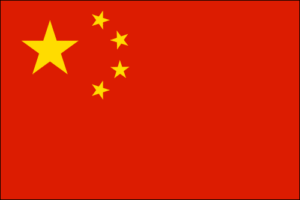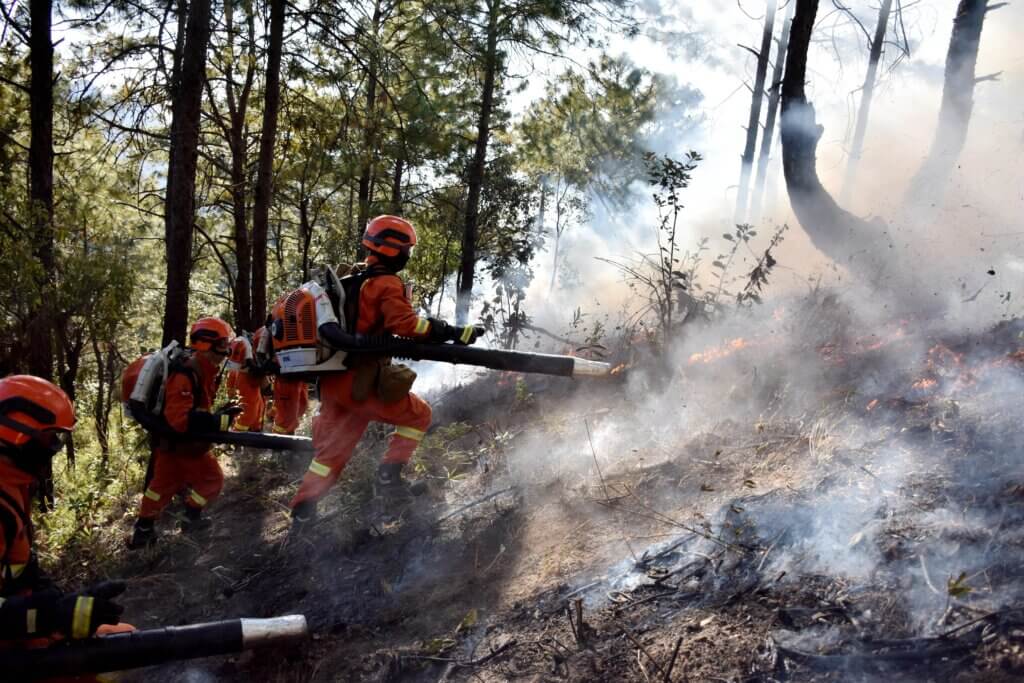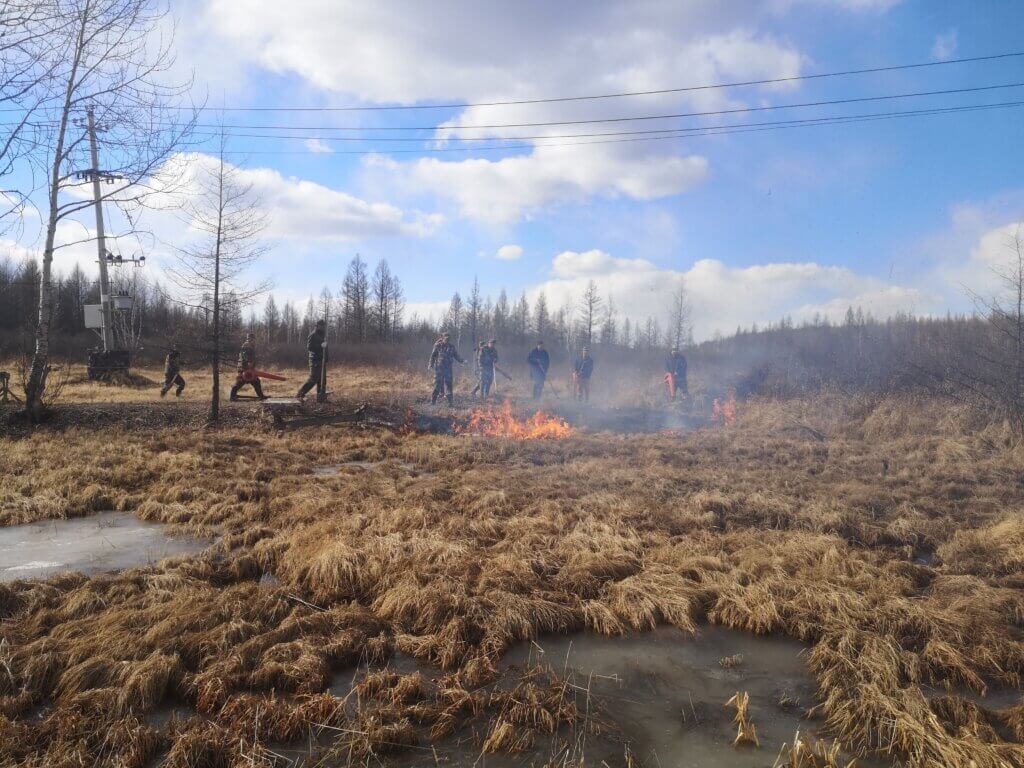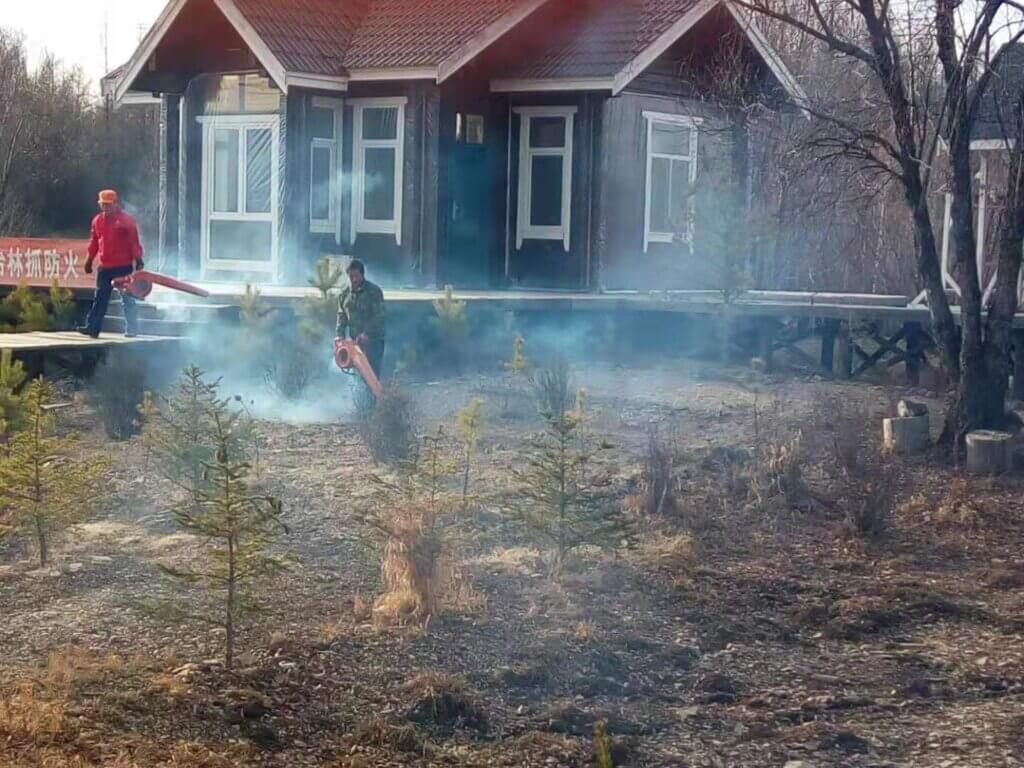CHINA
REGIONAL REGULATIONS GOVERN PRACTICES
BY YICHAO ZHANG, YIZHOU LI, AND XINYAN HUANG

The wildland in China covers about 220 million hectares, and the wildland coverage was 22.96 per cent by 2021. Most of China’s wildlands are located in the Northeast (the Greater Khingan Mountains forest region), North (Inner Mongolia region), and Southwest (Sichuan and Yunnan). After the shocking 1987 Black Dragon fire in Northeast China (193 deaths), the State Forestry Administration issued the first version of Technical Regulations for Fire in Forest Management in Northeast and Inner Mongolia Forest Areas to help control and manage wildfires, including prescribed burning. This regulation was updated in 2010 and again in 2020, and also guides prescribed burning in other regions.
In China, prescribed burning usually occurs from autumn to the next spring. In northern China, prescribed burning can be undertaken after the rain in the midsummer when the moisture content of forest combustibles is high. Most of the areas to be burned are selected according to the forest age and combustible conditions. The size and shape of the burned areas must be under control and within the scope of the plan with natural firebreaks and standby fire services. Today, prescribed burning is seen as a common proactive method for wildland management and fire prevention in most wildlanddominated areas in China.

Photos by Zhaohua DING, Forest pest control station of Genhe Forest Industry Company.
Nevertheless, in 2004, a prescribed fire in the Greater Khinganling Forest went out of control near the city of Heihe due to a sudden weather change. This disaster lasted for a week before it was controlled. Since then, the central government has tended to reduce the use of prescribed burning to avoid unexpected risks and regulate the proper actions to implement the prescribed burning. Local governments also set more policies to standardize the control of prescribed burning.
Phenological point-burning technology is a method with distinctive characteristics to select the burning time under current regulations; it guides the determination of the burning time through the combination of biological, meteorological, and hydrological phenology of wildfires. The phenological phase is the main basis for the burning time, but meteorological factors are merely as the reference basis. These principles are further expanded into technical guidelines for wildland fires in Inner Mongolia and northeast China, including (1) if ignition locations are suitable or not, (2) if the burning time is allowed or not, and (3) the uncertain conditions depending on the situation. The regulation also covers the methods of burning, organization, management, and precautions of prescribed burning. These principles serve as a reference for the prescribed burning in northern forest regions.
Sichuan in Southwest China has 20 million hectares of wildlands, eight per cent of which are natural forests. Recently, extreme wildfires have occurred frequently, and many have approached the wildland-urban interface. The Sichuan Fire Services Department defines several regulations based on ecological protection, so there are complete legal provisions regarding prescribed burning. There are eight no-burn principles – no prescribed burning (1) without permission, (2) in bad meteorological conditions, (3) in complex terrains, (4) without firebreaks, (5) without training, (6) without responsible personal, (7) during major holidays and social events, and (8) under disputable land ownership. Sichuan has the most detailed regulations on prescribed burning, even regulating practices for specific tree species. Although the practice of prescribed burning is widely recognized, its smoke and pollution still cause public concerns.


Yunnan, on China’s southwest border, has complex terrain and diverse wildlands and species, including many state nature reserves. In particular, Xishuangbanna National Nature Reserve has established a domestic prescribed burning regulation for nature reserves, which considers the potential impact on domestic wild animals. Regulations in Fujian, on the east coast of China, stipulate that for prescribed burning tasks, the first thing to do is conduct a survey, and then scientifically develop the burning and emergency plans. Since 2008, the provincial government has promoted public education on wildfire prevention to popularize the benefits and scientific significance of prescribed burning before burning every year. In short, there are active prescribed burning practices in China’s fire-prone habitat and forest ecosystem, and regulations are detailed, constantly updated, and varied in different wildland regions.
ABOUT THE AUTHORS
 Yichao Zhang is a visiting student at Hong Kong PolyU and his research focuses on peat fire.
Yichao Zhang is a visiting student at Hong Kong PolyU and his research focuses on peat fire.
 Yizhou Li is PhD student at Hong Kong PolyU and his research focuses on AIdrive wildfire forecast.
Yizhou Li is PhD student at Hong Kong PolyU and his research focuses on AIdrive wildfire forecast.
 Xinyan Huang is an assistant professor at Hong Kong PolyU, an associate editor of IJWF, and a board member of IAWF.
Xinyan Huang is an assistant professor at Hong Kong PolyU, an associate editor of IJWF, and a board member of IAWF.
